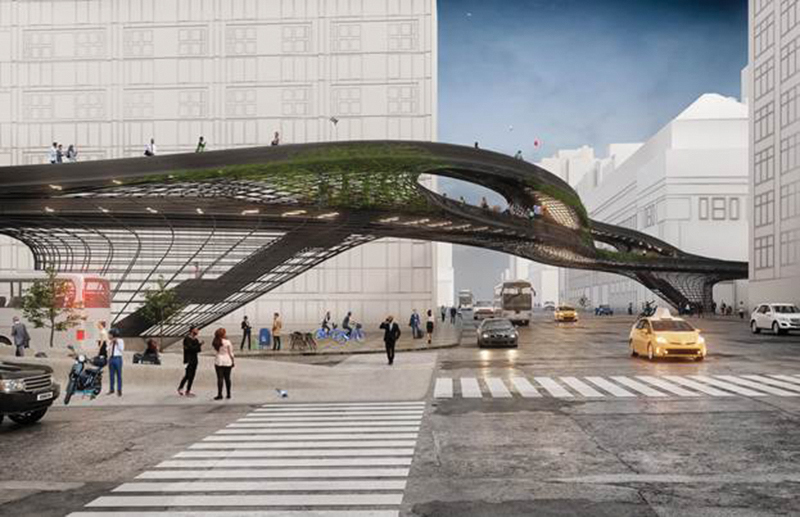
DXA studio wins grand prize in New Urban Pathways competition

New York, NY DXA studio, a New York based architecture and design firm known for a diverse range of projects primarily in Manhattan and Brooklyn, was awarded a grand prize for their design of an urban pathway spanning 9th Ave. and connecting the new Moynihan Train Hall at West 31st St. to the High Line and Hudson Yards at 30th St. The design was an entry to Metals In Construction Magazine’s 2019 Design Challenge: Create a New Urban Pathway.
“This design competition offered DXA Studio the opportunity to push the boundaries of contemporary steel construction to create a passage way between the historic repurposed Moynihan Train Hall and Hudson Yards,” said DXA studio partner Jordan Rogove. “Every year our studio picks a competition with a challenging program, something we think will help us collectively grow as architects and designers, and this one had it all! In the end, we’re so excited about our entry and were delighted that such an accomplished jury and Metals in Construction magazine were excited about it too.”
The jury included: Jack Robbins, AIA, of FXCollaborative, Benjamin Prosky, Assoc. AIA, Executive Director of the AIA New York Chapter, Claire Weisz, FAIA, of WXY, Enrica Oliva, M.Sc. Struct. Eng, of Werner Sobek New York and Paul Bauer, AIA, of Dattner Architects.
Drawing inspiration from the architectural icons it connects, DXA’s winning design references the historic interlaced steel plate work of the High Line and the intricate steel structure of the original inner concourse of the 1910 Penn Station. The structural steel fabrication also harkens back to the 19th century with the structural framing concept of the Statue of Liberty. Today the curved structural framing can be executed with a combination of innovative techniques, such as water jet cut steel and pre-fabrication assembly, to create a beautifully bending pedestrian path over the heavily trafficked avenue.
“The proposed structure consists of transverse ribs shaped according to the cross-section of the pedestrian pathway and spaced approximately every 10 feet at the longer linear paths. The resulting formation makes an interlaced and dynamic public space for this rapidly emerging area of the city” said DXA Studio Partner, Wayne Norbeck. In collaboration with Silman, DXA was able to assess the structural loads and stresses that took place over the largest span of the Viaduct over 9th Ave., validating the structural plausibility of this innovative use of steel construction, and ultimately expressing those forces in the design of the system.